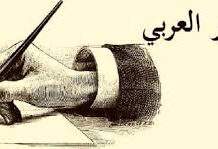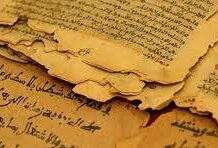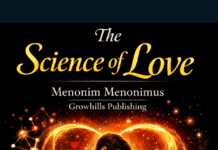The Characteristics of the English Language
The Characteristics of the English Language
The Characteristics of the English Language
The English language took birth in the mouth of the Anglo Saxons around the fifth century in England and it has made a great evolution through the long history of about one thousand and five hundred years. This long history of English may be divided into three distinct periods, as- (1) The Old English Period (from 450 A. D. to 1066 A D.) (2) The Middle English Period (from 1066 to 1500) and (3) The Modern English Period (1500 to the Present Day). The chief features (characteristics) of Old English and Modern English are going to be discussed below in brief. The Characteristics of the English Language
I. Characteristics of Old English
English is one of the major languages of the world. It is traced that English, as a language, began to come into being in the fifth century with the settlement of Anglo-Saxon races in England. Primarily there were four distinctive dialects of the language such as as-West Saxon, Northumbrian dialect, Mercian dialect and Kentish dialect. These dialects belonged to the great Teutonic or Germanic family of language. Among these dialects, the West Saxon dialect became the popular medium of speech and writing of the Anglo Saxon who lived on the southern side of England. Nowadays what is generally called Old English indicates the West Saxon dialect; not the other dialects. The period of Old English lasted from 450 to 1150 A.D. Here it is a matter of wonder to say that modern Standard English both written and spoken has not been derived from Old English (i.e. West-Saxon dialect) but from another dialect called the East Midland Dialect, particularly the dialect of the Metropolis London. There is a lot of difference between Old English and Modern English. Comparatively Old English is so much different in character from Modern Standard English that nobody can read and understand a single sentence of Old English without a special study of its spelling, sound, vocabulary and grammar. Here an attempt has been done to bring out the characteristics of Old English with a special comparison with the Modern English language.
The first feature of Old English is that the spelling of Old English words differs from that of their modern equivalent. Particularly the long vowels in Modern English have undergone considerable modification. The Old English took the vowel ‘a’ in place of ‘o’ as in modern English. Thus correspondence of vowels is visible in the words like –
Old Eng—Modern Eng
Rap ——- rope
Bat ——- boat
stan ——- stone
Like the such change of vowels, other vowels have likewise changed in such words as-
Old Eng—- Modern Eng
for ——- foot
metan ——- mate
fyre ——- fire
riht ——- right
The old English generally used two symbols to represent the sound of ‘th’ by ‘p’ and ‘o+’ which are no longer in use in modern English as-
Old Eng—Modern Eng
wip ——- with
da ——- then
Likewise old English represented the sound of ‘sh’ by ‘sc’ as in-
Old Eng—Modern Eng
sceap ——- sheep
sciotan ——- shoot
And ‘k’ sound was represented by ‘c’ in old English as-
Old Eng—Modern Eng
cynn ——- kin
nacod ——- naked
folc ——- folk
The second striking feature of Old English is its large and fundamental vocabulary. It did not borrow any foreign words abundantly as Modern English does, but it utilized its native resources to provide an expression for new ideas. It had great flexibility to use old words in new ways. In Beowulf, there are more than twelve synonyms for the word ‘battle’ and seventeen synonyms to express the idea of ‘sea’. This proves how resourceful Old English vocabulary was.
By means of prefixes and suffixes, a single root was made to yield a variety of derivatives in Old English. The Old English word ‘mod’ (Modern English ‘mood’) meant seven meanings such as- heart, mind, spirit, boldness, coverage, pride, haughtiness etc. By adding a common adjective ending ‘ig’ to the old English root word ‘mod’ it made the adjective ‘modig’ (mod+ig); by adding ‘iglice’ it made adverb ‘modiglice’ (mod+iglice) and by adding ‘ignes’ it made the noun ‘modignes’ (mod+ignes). There are other suffixes adding which many other new words were made in Old English such suffixes are- ig, full, lice, ness, ung etc. There were some suffixes to make noun as- ‘dom’, ‘had’ etc, for example-
Old Eng——-Modern Eng
Cyning-dom ——- kingdom
Cild-had ——- childhood
Like Modern German, Old English had many self-explaining compounds formed by its native resources, for example
Old Eng—Modern Eng
Ealo has ——- alehouse
Earhring ——- ear-ring etc.
The third striking characteristic of old English is relating to its grammar. The law of its grammar was highly synthetic like German, Latin and French whereas Modern English is highly analytical. In old English, no harm would have been done to the meaning of a sentence if the subject and object exchanged their positions. For example ‘se cild pas words gehjerde’ that means the “child heard these words”. It will mean the same meaning if we arrange the words in another way as ‘pas word gehjerde se cild’.
Old English Gender was grammatical and not natural in contrast with Modern English gender. It means that the gender of Old English depended on the form of a word and not upon the consideration of the sex or absence of sex. As for example such words- fot (foot) mona (moon) stan (stone) in old English were considered to be masculine whereas they are feminine in Modern English. The words like mxgden (girl) wif (wife), cild (child) were considered in old English to be neuter while they are feminine in Modern English. Thus hand, sonne (sun) in old English were feminine whereas they are masculine in Modern English. In this respect, the old English gender system is comparable with that of German.
To the reference of cases, Old English had only four cases and there was no ablative or locative or instrumental case. In Old English, some nouns made their genitive singular in-‘e’ other in- ‘es’ other in-‘a’ and other in-‘an’. The ending which marked the nominative plural were- a as u, e and an. In a few nouns, the genitive cases had the same form as the nominative.
Like other Teutonic languages, Old English adjectives had two-fold declensions: weak declensions and strong declensions. Weak declensions are used where the noun was preceded by a definite article or similar word (such as a demonstrative or possessive pronoun). And the strong declension was used when the noun was not preceded by such a word, as for example-
Weak Declensions—Strong Declension
Godmann (Goodman)— se godmann (the goodman)
Like other Teutonic Languages, Old English verbs had two tenses-past and present and there were no inflexional forms for the passive as in Latin or Greek. As in Modern English, the verbs of Old English were divided into two classes- weak and strong. In old English, verbs had different forms for singular and plural in different persons such as- ie sing (singular) we sunga (plural). While Modern English conjugates as-
I sing (singular)–we sing (plural)
I sang (singular)–we sang (plural)
It would be done harm to the essay if a few words are not said about the characteristics of old English prose and poetry. In this respect it is to say that Old English Prose was more clumsy, dirty and cumbersome than that of Modern English Prose; but Old English Poetry was almost as rich as Modern German and Sanskrit. In contrast to modern English poetry, Old English poetry was more lyrical, figurative and alliterative.
In conclusion, it is to say that old English was much more original, fundamental, synthetic, self-explaining and somewhat clumsy and complicated than Modern English. If Old English would have retained its earlier status and had not been modified and simplified to Modern English it could hardly be the international language of the present-day world. 0 0 0 The Characteristics of the English Language
The Characteristics of the English Language
N. B. This article entitled ‘The Characteristics of the English Language’ originally belongs to the book ‘A Brief History of the English Language‘ by Menonim Menonimus. The Characteristics of the English Language
Books on Linguistics by M. Menonimus:
- A Brief History of the English Language
- Essays on Linguistics
- My Imageries
- Felicitous Expression: Some Examples
- Learners’ English Dictionary
Books of Composition by M. Menonimus:
- Advertisement Writing
- Amplification Writing
- Note Making
- Paragraph Writing
- Notice Writing
- Passage Comprehension
- The Art of Poster Writing
- The Art of Letter Writing
- Report Writing
- Story Writing
- Substance Writing
- School Essays Part-I
- School Essays Part-II
- School English Grammar Part-I
- School English Grammar Part-II..
Related Searches:
- 10 Characteristics of Human Language
- 10 Main Features of Human Language
- Characteristics of Language
- Word Formation Process
- Types of Word Formation Process
- Sociolinguistics and Its Scope
- The Nature and Scope of Sociolinguistics
- Bilingualism Overview
- Aspects of Bilingualism
- Morphology
- What is Morphology
- Classifying Consonants
- Classification and Description of Consonants
- Types of Sentence in English With Examples
- The 4 English Sentence Types
- The English Language: Some Characteristics …











